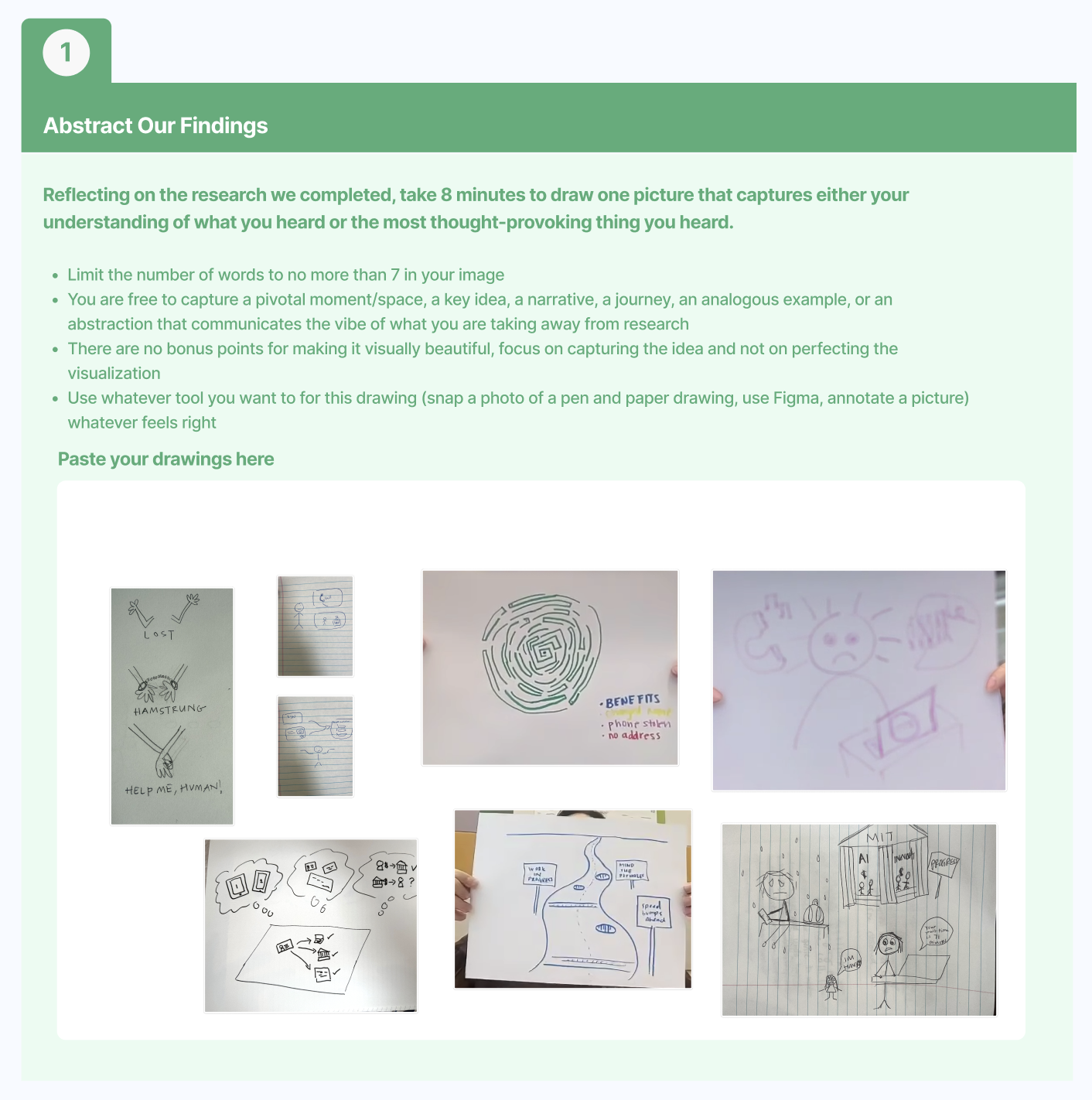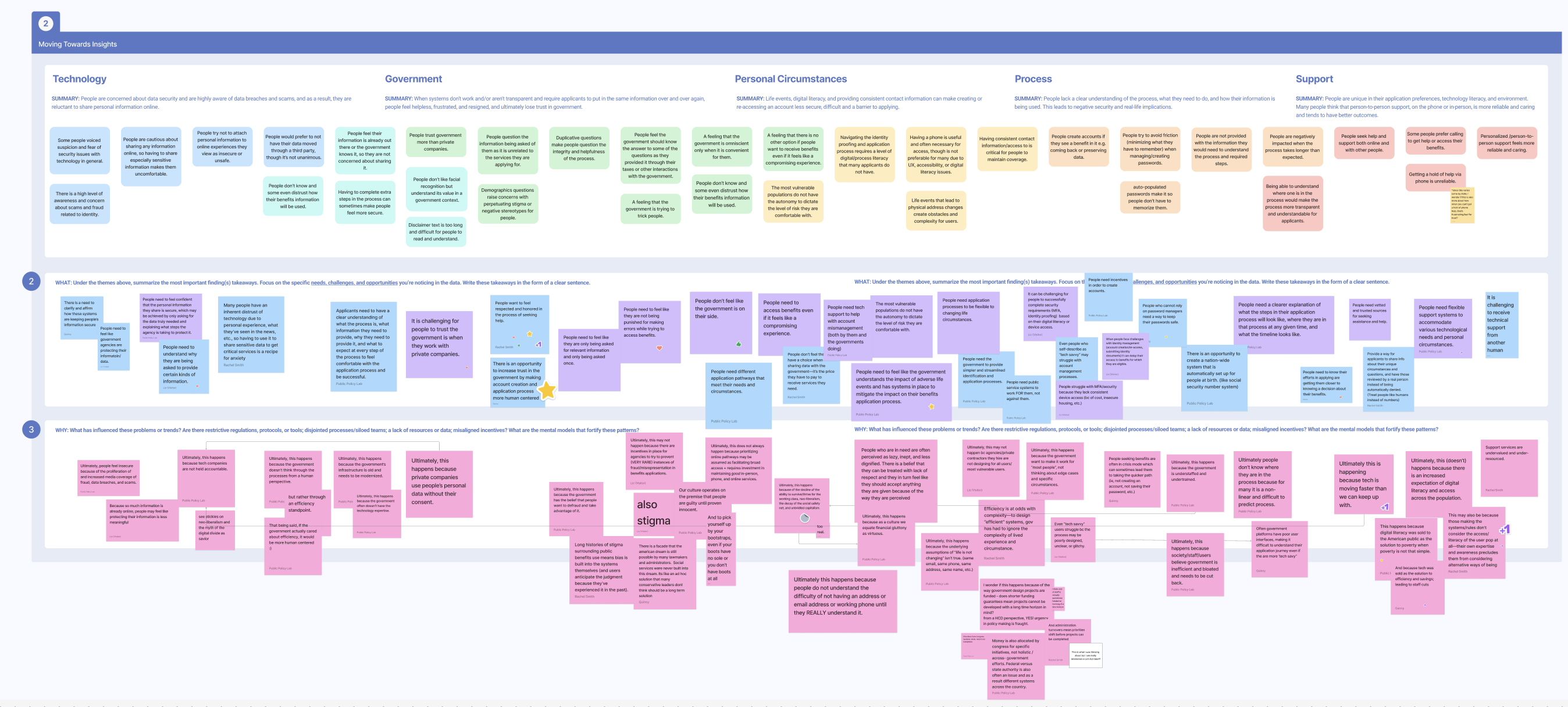Digital Doorways to Public Benefits
Project
Public benefits administrators may use account creation, authentication systems, or digital identity proofing to understand who users are, secure systems, and protect private data. However, these processes can pose undue barriers to people accessing benefits. This project aimed to provide administrators with first-hand experiences of members of the public who use digital identity systems as they apply for and access public benefits like like Medicaid, SNAP, and Unemployment Insurance (UI).
The case study for the project can be found here.
The full report can be found here.
Partner
Beeck Center for Social Impact + Innovation Digital Benefits Network
My Role
Project Management:
- Set up project and research operations and timelines
- Managed partner relationships
- Delegated tasks to team members
- Organized travel and accomodations for research
- Performed quality assurance on data collection practices and deliverables
- Scheduled internal review meetings
- Designed and delivered decks for partner share-outs
- Designed and facilitated three consecutive synthesis workshops
- Provided feedback on the final report
Research
During research, we engaged 33 participants across Boston, Massachusetts; Phoenix and Tucson, Arizona; and Yonkers, New York. We also spoke with subject matter experts, including legal aid staff, and librarians who often assist folks in benefits access. These interviews were conducted with the support of CBOs, libraries, and non-profits who opened up their spaces to us.
Inquiry Areas:
- Access
What accessibility challenges do beneficiaries face when navigating digital identity processes (e.g., account creation, authentication, and identity proofing) across different contexts, devices, and personal circumstances?
- Consent
How do beneficiaries experience choice, control, and transparency in digital identity systems?
- Support
What support systems are available to enrollees and
beneficiaries and how do they interact with them?
- Trust
How do digital identity systems and/or external forces affect beneficiaries’ trust, agency, and experience accessing public benefits?
During interviews, we used design stimuli to aid our conversation. These included a journey map of benefits portal screens to visualize the account creation, log-in and, when relevant, identity proofing steps across Medicaid, SNAP, and UI for each state. This visualization helped jog participants’ memories and ground the conversation in specific features.
 Using design stimuli to learn more about the users experience navigating digital benefits
Using design stimuli to learn more about the users experience navigating digital benefitsFrom our interviews, we collected 700+ noteworthy data units, which we collected into a scrubbed and tagged research repository.
Synthesis
I designed three synthesis workshops to complete with our partners to take our findings and uncover compelling insights. I initially set this up by extracting a representative set of ~120 data points (quotes and paraphrases from interviews), and pre sorting them into slightly more specific themes than the inquiry areas.
I included a warm up activity for each session, such as the one below, that encouraged creative thinking.
 Workshop #1 warm up
Workshop #1 warm upWorkshop 1
The goal for the first workshop was to sort and draw connections between topics and patterns.
 Workshop space in Figma
Workshop space in FigmaWorkshop #2
The goal of the second workshop was to begin creating needs/opportunity statements, and also consider what the underlying structures or mental models fortify the current state.
Before this workshop I took the clustered themes from the workshop before and organized them by topic (Technology, Government, Personal Circumstances, Process, and Support).
 Workshop space in Figma
Workshop space in FigmaWorkshop #3
In the third workshop we began to generate insights.
In preparation for this workshop I created a formula to support insights by using the ideation from previous workshops.This included the thematic findings and needs statements, quotes from research, and underlying structures that support to current state of the system. It also included pulling the reccomendations we had been coming up with throughout the project. My team at PPL then generated as many insights as possible to prune and edit with partners in the final workshop.
 A first draft of an insight
A first draft of an insightIn the end, the report identifies four primary themes and nine related insights.
Privacy & Security Challenges
- Beneficiaries often prioritize access over privacy and security concerns
- Tensions exist between security and user convenience
Access & Authentication Issues
- Changing personal circumstances can make account re-access difficult
- Unstable access to devices and accounts complicates multi-factor authentication
- Current security measures don’t always accommodate diverse life experiences
User Experience & Support
- Human support remains crucial, even with digital systems
- Not all friction in the process is negative; sometimes it can be beneficial
Technology Access & Literacy Barriers
- Digital literacy and access to technology significantly impact experiences
- Biometric and document or photo upload tools can cause discomfort and usability challenges